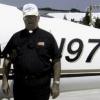
Sign in to follow this
Followers
0

Flawed Logic for RadAlt ??
By
n4gix, in FSX/FSX-SE Aircraft and Panel Design Forum - How To


By
n4gix, in FSX/FSX-SE Aircraft and Panel Design Forum - How To